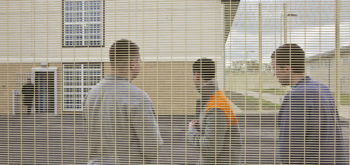[contextly_auto_sidebar id=”VO2ypZnBFp0CKy2WT8LjdIwY3cdy3ysE”]
MPs warned of the danger of ‘justifying’ the controversial joint enterprise doctrine simply because it delivered a ‘social message’ about the perils of gang crime rather than being necessary under the law. The House of Commons’ Justice Committee this morning called for an urgent review of the common law doctrine in a new report published today.
‘It is noticeable that black and mixed race young men are disproportionately represented among those convicted under joint enterprise,’ commented the committee’s chair Sir Alan Beith. The Lib Dem MP noted that some commentators argued that the doctrine had ‘an important effect in deterring young people from getting involved in criminal gang activities’.
- You can watch our interview with Jimmy McGovern about his film Common and joint enterprise here
- You can readthe Bureau of Investigative Journalism research here
‘There is a real danger in justifying the joint enterprise doctrine on the basis that it sends a signal or delivers a wider social message, rather than on the basis that it is necessary to ensure people are found guilty of offences in accordance with the law as it stands.’
Alan Beith
The MPs were particularly concerned about the application of joint enterprise in murder cases. The mandatory life sentence meant that someone could be given a life sentence without the prosecution having to demonstrate that they had any intention of murder or serious bodily harm and where their involvement was ‘minor and peripheral’, the justice committee noted. The MPs have called upon the Law Commission to ‘consider the proposition that it should not be possible to charge with murder, but only with manslaughter or a lesser offence, secondary participants in joint enterprise cases who did not encourage or assist the perpetration of the murder’.
At the end of 2012 the Crown Prosecution Service provided guidance for prosecutors on joint enterprise charging decisions as a result of the committee’s previous inquiry. However the MPs concluded that, two years later, the data made available from the courts allowed for ‘only the most tentative conclusions’ to be drawn about whether prosecutors were overcharging.
The committee reported that no record was kept of numbers of prosecutions brought, or convictions made, under joint enterprise. The MPs drew on the work of the Bureau of Investigative Journalism who had submitted freedom of information requests to the CPS for numbers of successful and unsuccessful homicide prosecutions involving four or more defendants between 2005 and 2013. According to TBIJ, the total number of homicide prosecutions in cases involving four or more defendants dropped from 182 in 2012 to 165 in 2013 but the number of convictions increased from 120 to 126.
Alan Beith warned that it was ‘not acceptable’ for the courts and government to give ‘such limited attention and priority to the recording and collation of fundamental information about the use of the doctrine’ given the concern about joint enterprise.
Caught in a dragnet
A number of witnesses made the point that joint enterprise doctrine operated as a ‘dragnet’ which was (in the words of the report) ‘hoovering up young people from ethnic minority communities who have peripheral, minor or in some cases even non-existent involvement in serious criminal acts’. ‘We heard from campaigners who believe that it has resulted in widespread miscarriages of justice,’ Sir Alan said; adding that any review of the law ‘would have to be handled carefully so as not to cause distress to victims and their families’.
It was revealed that some 145 applications had been made to the Criminal Cases Review Commission since 2004 from people convicted under the doctrine but, according to the Commission, there were likely to have been ‘many more such applications’ but which had not been labelled joint enterprise. Of the 145 joint enterprise-related applications, 109 were from principal parties and 36 from secondary parties and six out of 10 related to murder convictions.
The CCRC had made seven referrals in joint enterprise cases since 2004 but only one conviction was quashed. This compared to its average 70% success rate. The CCRC identified three hurdles for joint enterprise applicants: the difficulty of assessing new evidence ‘in light of conflicting testimonies from various defendants’; the difficulty of identifying new evidence impacting on mens rea sufficient to raise a real possibility that the Court of Appeal would quash a conviction; and the additional problem, in relation to finding fresh mens rea evidence, that often joint enterprise cases arose ‘on the spur of the moment and the relevant state of mind may be fleeting’.
Dr Matthew Dyson, a law lecturer at the University of Cambridge, said that the TBIJ finding that just over 22% of all Court of Appeal rulings in 2013 related to joint enterprise cases was a ‘terrifying statistic and evidence of the constant appeals against this doctrine’. By contrast, the DPP Alison Saunders said that the small number of convictions being overturned made her feel ‘reassured’.
Janet Cunliffe of the campaign group JENGbA told MPs that eight out of 10 people who contacted the group were from the BAME community and nearly all working class. ‘She drew the conclusion that joint enterprise was being used to target the most marginalised sections of society, and was having the effect of breaking communities apart’. It was reported that almost four out of 10 (37%) of those serving very long sentences for joint enterprise offences were black which was ‘eleven times the proportion of black people in the general population and almost three times as many as in the overall prison population’. There was also a far higher proportion of mixed race prisoners convicted of joint enterprise offences than there were in the general prison population (16% compared to 4%).








